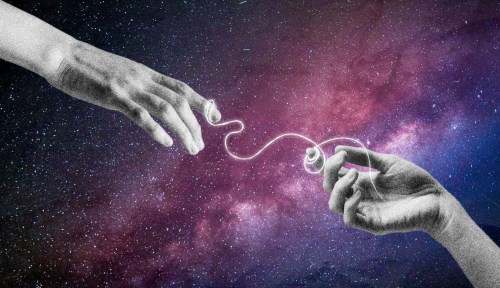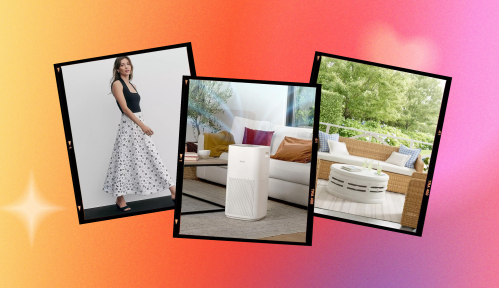We called it… but did we get it right? Back in December, the Well+Good editors gazed into their crystal balls (aka a year’s worth of research, scouting, and reporting) in order to name what we were sure would be the buzziest trends in wellness for 2019.
Now, halfway through the year, we’re checking in to see how we did. Here’s where we were right on the money and what we never saw coming.
At the end of 2018, Well+Good predicted that performative wellness was as good as dead—or at least on a steep decline. The sense that to-do lists inclusive of self-care acts that skew stressful in execution weren’t serving us was all but palpable, as evidenced by each forgone workout-studio selfie and streamlined (or totally skipped) skin-care routine. While we certainly felt a collective farewell percolating to any kind of emotional, physical, and technological clutter masquerading as self care when we named the trend, we didn’t pinpoint the cause of all of our Kondo-ing. That underlying cause, though, quickly emerged as the slogan of sorts for 2019: burnout. As it’s become crystal clear, so many of us are simply too tired to deal with literally and figuratively picture-perfect meals (or nutrition plans), morning routines, schedules, or lives in general.
The smoke was visible as early as January, when BuzzFeed reporter Anne Helen Petersen tackled the issue head-on in her piece about millennial burnout, noting telltale features of the then-unofficial condition, like “errand paralysis,” that add up to strong fatigue on a generational level. (She’s now working on a whole book about burnout.) How to solve the problem, though, is a more complicated web, with no clear-cut answer. “The best way to treat it is to first acknowledge it for what it is—not a passing ailment, but a chronic disease—and to understand its roots and its parameters,” she wrote.
And ultimately, that’s exactly what happened. In May, the World Health Organization added burnout syndrome to its International Classification of Diseases and marked its symptoms as “feelings of energy depletion or exhaustion, increased mental distance from one’s job, or feelings of negativism or cynicism related to one’s job, reduced professional efficacy.”
Sure, those symptoms are broad, and can surely describe all people at some points, but the reality of workplace burnout finally being recognized as something official and diagnosable is a big step in the right direction—away from an expectation to essentially grin and bear all the mounting stress. Of course, this doesn’t serve as a cure-all for the numerous ways burnout can seep into our lives: Constantly swiping apps, for example, can dating burnout given that the additional effort required to contact myriad matches can start to feel like a second job. And, of course, the very existence of our phones fuel the fire of social burnout, with emails and texts overloading our screens every day.
Burnout has all but forced our hands in ending performative wellness, because something pretty and filtered and luxe doesn’t necessarily provide for a de-stressing break from the obligations of life.
So there’s all this evidence about burnout and its near omnipresence in our multi-tasking lives, yet the very thing that’s supposed to be an antidote—self care—had been being used in such a way that was only making the fire burn stronger. Burnout has all but forced our hands in ending performative wellness, because something pretty and filtered and luxe doesn’t necessarily provide for a de-stressing break from the obligations of life. In fact, it’s become clear—this year especially—that self care only really works as an energizing, happiness-boosting agent if employed in a way that’s specifically conducive to the individual in question.
In a recent internal Well+Good dialogue wherein editors shared what wellness means to them personally, one through line that emerged was that taking care of yourself is a highly personalized experience, and that certain rituals will simply not spark joy for everyone. So, if you’re finding yourself bogged down with a too-stressful self-care ritual—performative or not—all I can say is this: delete, delete, delete.
To echo Petersen’s stance, streamlining your self care won’t necessarily “cure” your burnout; the condition is so deeply rooted in society that the solution might have to be raising the next generation differently. Only time will tell how shifting priorities will change the narrative and experience. But one sound treatment in the meantime? Prioritizing the self care that first and foremost helps you.
Other ways burnout syndrome is likely to become even more common? Believe it or not, your open office plan and unlimited vacation time could be sneaky contributors.
Sign Up for Our Daily Newsletter
Get all the latest in wellness, trends, food, fitness, beauty, and more delivered right to your inbox.
Got it, you've been added to our email list.











